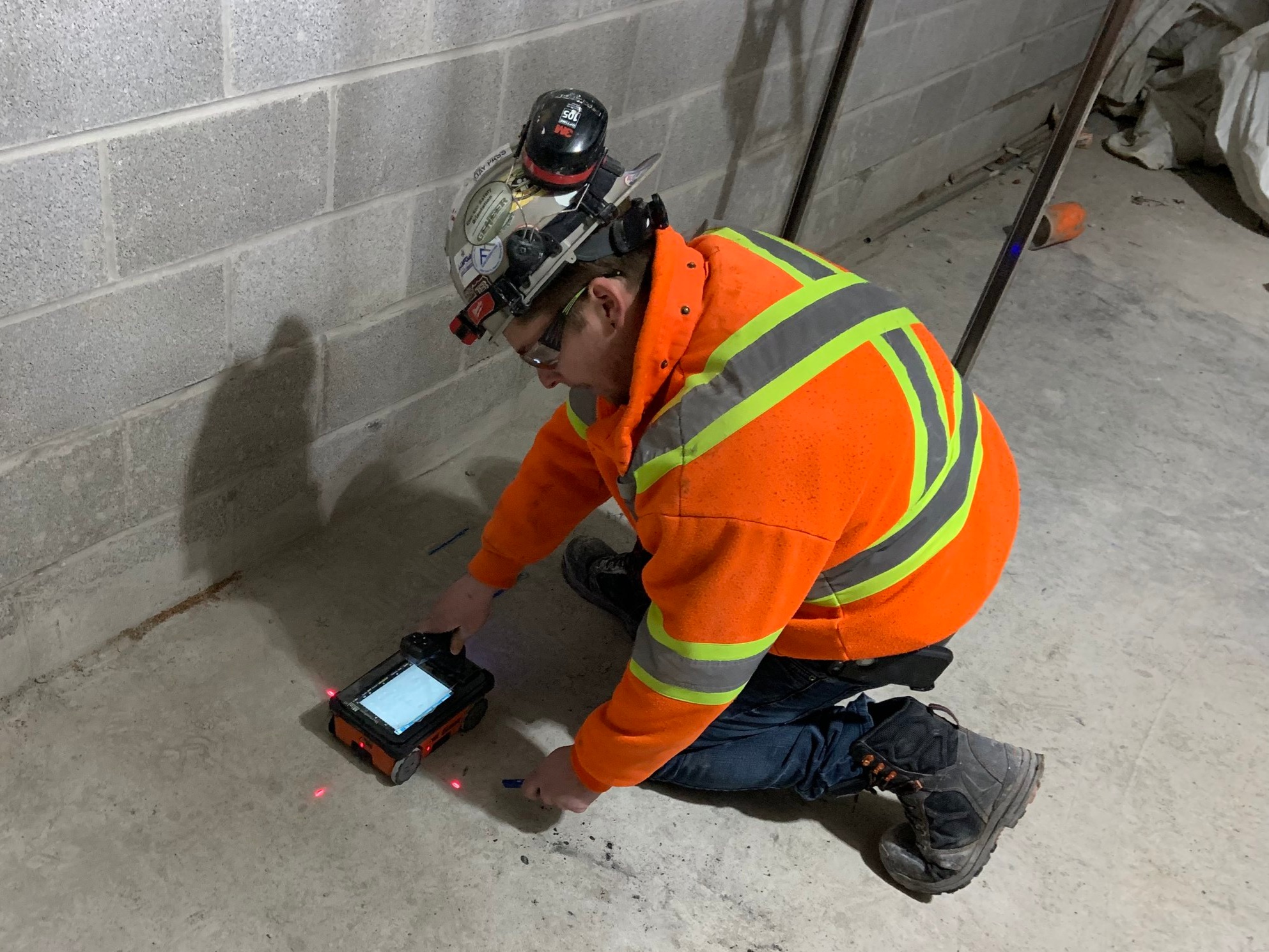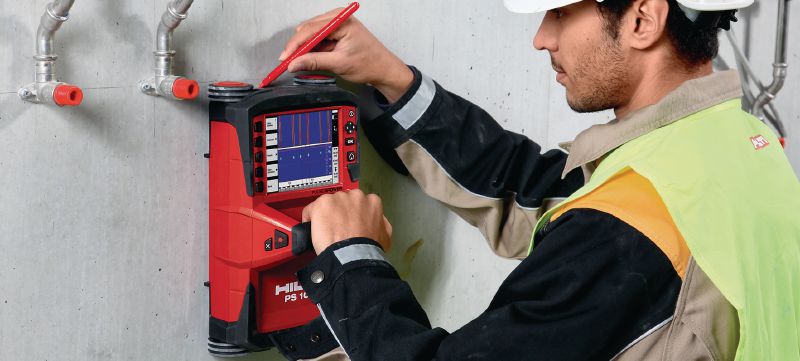Make Best Use Of Building And Construction Safety And Security with RainierGPR Concrete Scanning Providers
Make Best Use Of Building And Construction Safety And Security with RainierGPR Concrete Scanning Providers
Blog Article
The Value of Exact Concrete Scanning in Detecting Underground Hazards
The capability to properly find and map these underground dangers is not merely a matter of ease however an essential facet of ensuring the safety and security of both construction employees and the integrity of the job itself. By deploying innovative scanning innovations and techniques, experts can uncover surprise risks, stop costly damages, and inevitably lead the method for smoother and safer building and construction ventures.
Advanced Scanning Technologies for Detection
Advanced radar systems are changing the field of below ground detection by supplying exceptional accuracy and effectiveness. These advanced scanning innovations make use of ground-penetrating radar (GPR) to develop comprehensive photos of subsurface structures, providing understandings into what exists underneath the surface area with amazing quality. By releasing high-frequency pulses into the ground and determining the representations, radar systems can identify variations in product structure and identify underground risks such as cables, spaces, and pipelines.
One of the essential advantages of these sophisticated radar systems is their non-invasive nature, enabling for thorough evaluations without causing damage to the existing structures. This not only makes certain the safety of the surrounding environment but additionally minimizes the need for costly repairs or disruptions to continuous construction tasks. In addition, the real-time data offered by these scanning technologies enables fast decision-making and improves general job efficiency.
Importance of Subsurface Mapping

Exact subsurface mapping aids in protecting against pricey problems to existing underground facilities, minimizing the danger of accidents, and maintaining project timelines. It enables task supervisors to make enlightened choices relating to site planning, equipment release, and source allowance. Furthermore, subsurface mapping permits much better sychronisation among various groups servicing a project and helps in abiding by governing demands associated to below ground utility detection.
Mitigating Risks in Building And Construction Jobs
Efficient risk reduction methods are vital for guaranteeing the success and safety of building and construction jobs. Identifying and resolving prospective dangers prior to they intensify is essential in maintaining job timelines, budget plans, and overall top quality. One essential facet of mitigating dangers in construction tasks is complete preparation and evaluation at the preliminary stages. Performing detailed site studies, including precise concrete scanning for below ground threats, can help in recognizing possible problems at an early stage. Utilizing innovative innovations like ground-penetrating radar and electro-magnetic induction can help in spotting energies, rebar, or other obstructions that might pose dangers during building and construction.
Additionally, establishing clear interaction networks among all task stakeholders and guaranteeing strict adherence to security protocols are important elements of threat reduction. Routine evaluations, top quality control steps, and tracking of job progress can assist in identifying and attending to any kind of emerging threats without delay. Furthermore, having backup plans in position for unforeseen obstacles can dramatically reduce the impact of disruptions on the job. By proactively carrying out durable threat reduction techniques, building projects can reduce hold-ups, expense overruns, and security occurrences, ultimately causing successful project outcomes.

Avoiding Pricey Problems and Hold-ups
To reduce economic losses and task problems, efficient methods have to be executed to protect against costly damages and hold-ups in building and construction projects. One critical way to accomplish this is by performing comprehensive concrete scanning before any kind of excavation work begins. By utilizing advanced scanning technologies such as ground-penetrating radar (GPR) and electromagnetic induction, building groups can accurately spot underground dangers like rebar, avenues, and other utilities. Determining these blockages early assists in intending the task you can find out more layout more efficiently and preventing possible damages throughout excavation.
Furthermore, investing in training programs for building and construction employees on the value of concrete scanning and risk-free excavation practices can significantly reduce the threat of delays and accidents. Clear interaction channels in between project supervisors, engineers, and on-site employees are likewise important to make certain that everyone is mindful of the prospective threats and complies with the required protocols to stop expensive problems. By focusing on positive actions like concrete scanning and promoting a society of safety and recognition, building tasks can minimize the economic impact of unanticipated underground obstructions and stay clear of expensive hold-ups.
Ensuring Safety of On-Site Employee
By prioritizing aggressive measures such as thorough training programs and clear communication networks, construction tasks can make sure the safety of on-site workers amid the possible risks detected with concrete scanning. Proper training outfits workers with the understanding and abilities needed to browse construction sites securely, especially when threats are recognized via scanning processes. Training needs to cover hazard acknowledgment, emergency situation procedures, and the correct utilization of individual safety tools to reduce dangers properly.
Additionally, establishing clear communication channels is important for distributing info regarding determined dangers without delay. This guarantees that all on-site employees understand possible dangers and can take necessary safety measures to stay clear of mishaps. Normal safety rundowns, toolbox talks, and constant updates regarding scanning results assistance keep everybody informed and aggressive in keeping a risk-free workplace.
In addition, carrying out stringent adherence to safety methods and guidelines, conducting normal security audits, and fostering a society of security awareness amongst workers are crucial elements in ensuring the wellness of on-site personnel throughout construction tasks - RainierGPR Concrete Scanning. Positive precaution not only secure workers from injury but additionally contribute to the total success and effectiveness of the project
Final Thought
In conclusion, specific concrete scanning plays a critical function in spotting below ground hazards. Using advanced scanning innovations and subsurface mapping helps alleviate threats in building tasks, avoiding pricey damages and hold-ups. By ensuring the security of on-site personnel, precise scanning helpful resources can dramatically improve the performance and success of construction operations. It is essential for building firms to prioritize the use of exact scanning methods to reduce prospective threats and ensure a smooth building procedure.
By proactively applying robust that site risk reduction approaches, building and construction jobs can lessen hold-ups, expense overruns, and security events, eventually leading to successful project outcomes. - RainierGPR Concrete Scanning
To decrease economic losses and job obstacles, reliable methods need to be executed to avoid expensive damages and hold-ups in building and construction jobs. By prioritizing proactive measures like concrete scanning and promoting a society of security and awareness, construction tasks can minimize the financial impact of unexpected underground blockages and prevent expensive delays.
By focusing on aggressive steps such as detailed training programs and clear communication channels, building jobs can guarantee the security of on-site workers amid the potential threats identified with concrete scanning. Utilizing innovative scanning innovations and subsurface mapping helps minimize dangers in construction jobs, preventing pricey damages and hold-ups.
Report this page